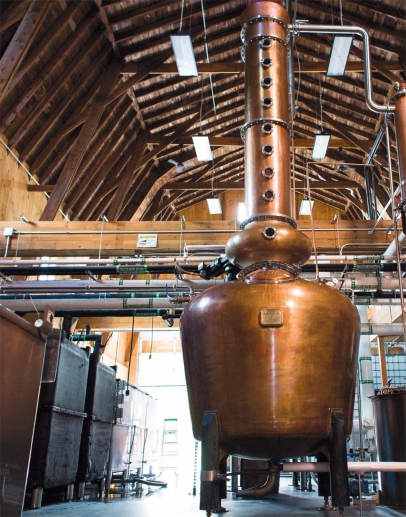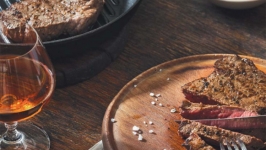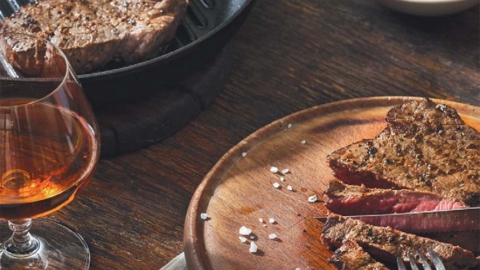WhistlePig Distillery: "Preaching the Pig"
Meghan Ireland was leafing through her dad’s Whiskey Advocate magazine in 2017 and saw an article about a woman chemical engineer who had risen to master distiller. Meghan thought that might be a cool way to put her own chemical engineering degree from Clarkson to good use. In 2018, she joined the team at WhistlePig and started working alongside the legendary Dave Pickerell, former master distiller at Maker’s Mark. He, too, had a degree in chemical engineering, as does WhistlePig’s lead distiller, Emily Harrison, who saw the light and moved from Wild Turkey to WhistlePig.
“People often think of whiskey as a men’s club, and it’s relatively rare to have two women as lead distiller and chief blender. Emily oversees the spirits when they’re clear, and I’m in charge of them when they’re brown,” Meghan explains with a laugh. Meghan and Emily feel deep gratitude to have worked with Dave, a beloved icon in the whiskey world. Dave passed away in 2018, but his spirit clearly infuses this farm distillery tucked amidst the rolling hills and waving fields of grain in Shoreham.
“Dave built this place in a way that encourages us to continue making some of the best rye whiskey in the world, but he also pushed us to create,” Meghan notes. “That gives us license to innovate. WhistlePig produces rye whiskey 90 percent of the time, but Emily’s distilling team also experiments with corn and barley. And as chief blender, I’m always trialing different blends and on the lookout for fun and interesting barrels for finishing. That’s the super fun part of my job! I’ll try anything, once.”
Who knew chemical engineering could be so much fun?
WhistlePig was established in 2007 on a 150-year-old former dairy farm, where they now grow more than 200 acres of rye. “We take our rye from seed to glass, from the farm to the distillery,” Meghan says. All that grain—plus supplemental rye, corn, and barley—is milled just steps away from the distillery. Pure water from the farm’s artesian wells adds to the whiskey’s terroir. In order to meet the growing demand, WhistlePig sources spirits from Canada, which Meghan ages and blends into the lineup of products.
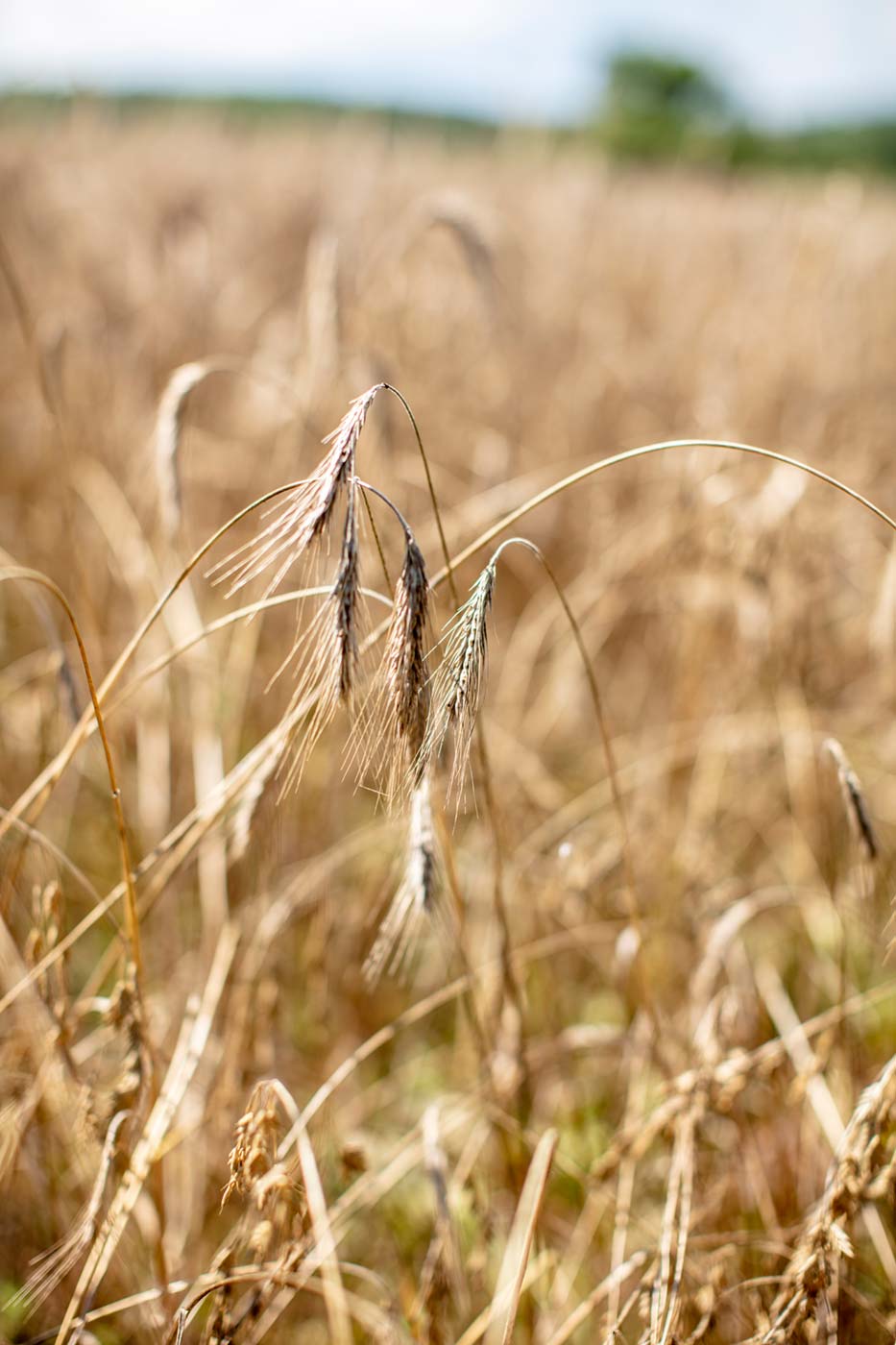
Acres of golden rye just prior to July harvest at Whistlepig Farm
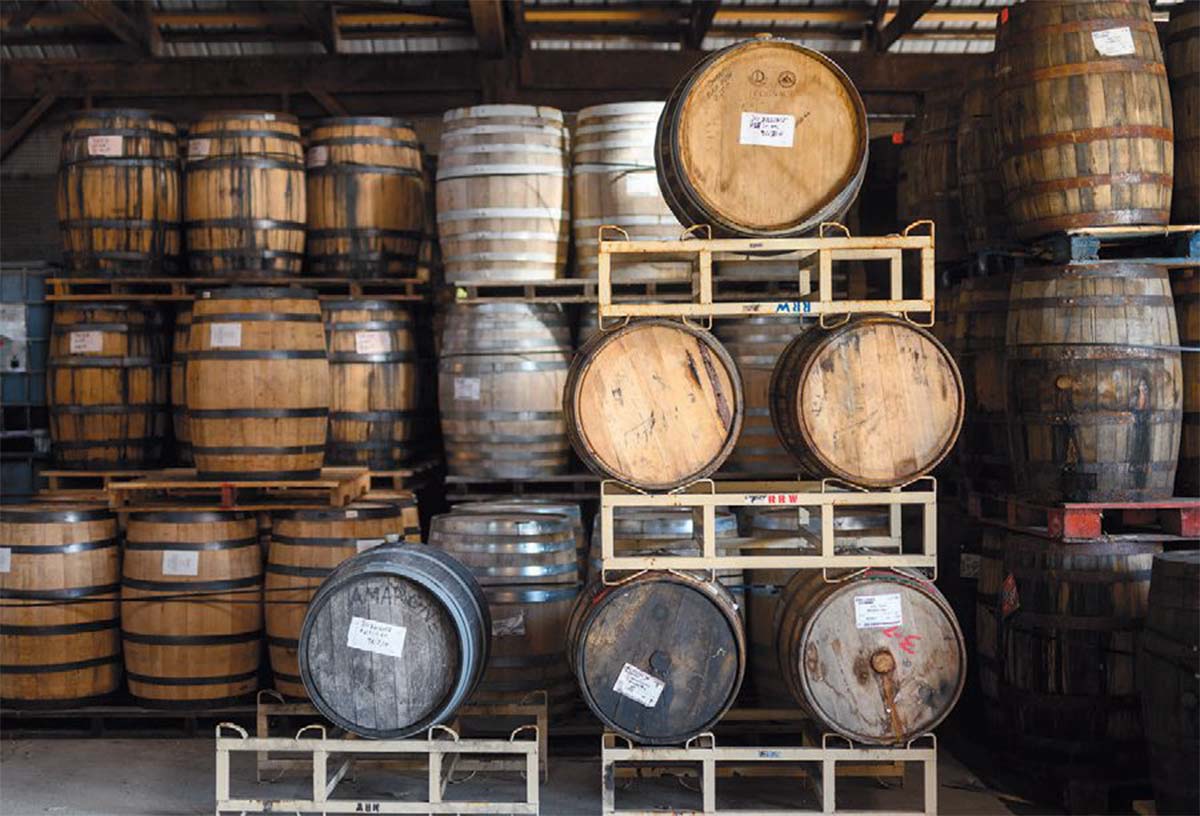
Specialty barrels of WhistlePig rye quietly slumber in Shoreham
“The 10-year-old, the original WhistlePig, put us on the map,” she explains. “It’s a big, bold, spicy rye. The 12-year-old, my personal favorite, is the first rye we finished in three different barrels: port, Madeira, and sauternes. That combination produced sweeter caramel notes. Our 15-year-old spends 15 years in new American oak barrels and then up to a year in barrels crafted from oak harvested on our farm estate.”
“Piggyback is a younger rye and more approachable in price,” she continues. “We wanted to get this rye into bartender’s hands because it’s ideal for mixing into cocktails, so we designed the bottle with a longer neck that makes it easy to grab from the bar. Piggyback is the last product Dave made before he died so we pay homage to him throughout. We proofed it at 96.56, which is Dave’s birthday, and the pig on the label wears Dave’s trademark black cowboy hat rather than its traditional Churchillian top hat.”
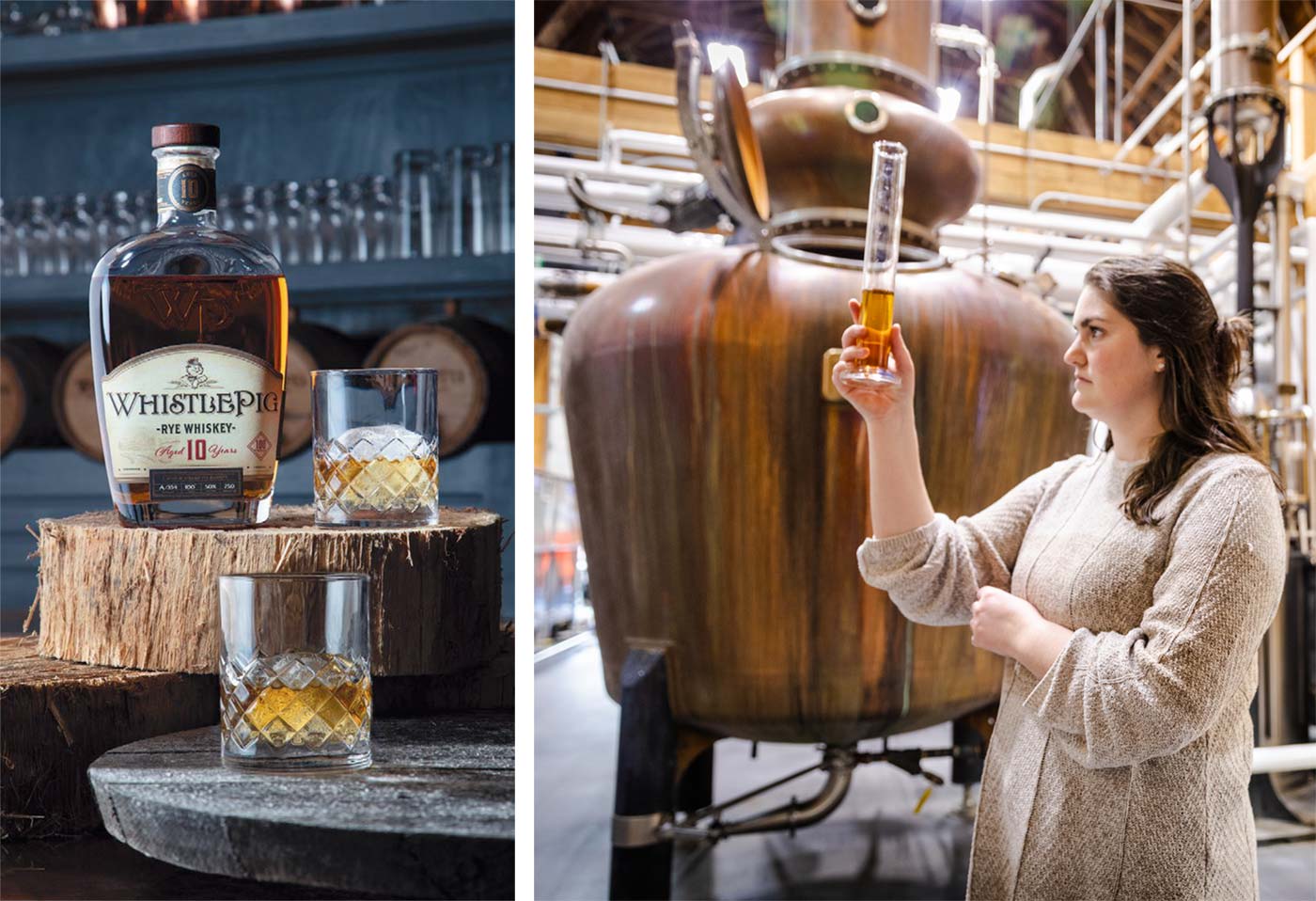
Chief Blender Meghan Ireland scrutinizes a forthcoming batch of WhistlePig rye.
“For Farmstock, we blend three whiskeys: a combination of 6-year and 10-year Canadian whiskey and rye whiskey we distilled right here. Roadstock is a fun collaboration we did with Jordan Winery and Firestone Walker Brewery this past spring. We sent an 18-wheeler with barrels of our whiskey out to California, flipped our whiskey into their barrels, and loaded them back on the truck. The whiskey was then mixed and shaped by all the different temperatures and elevations during the trek back to Vermont.”
And then…there’s the uber-premium Boss Hog series. WhistlePig has produced seven editions, where Meghan’s expertise shines. “Every year we add a special finish to make it truly distinct,” she says. “For our current Boss Hog, Magellan’s Atlantic, we used Spanish oak and finished it in South American teak, which added baking spice notes.” And the name? “Magellan started his journey in Spain and worked his way to South America.” For Boss Hog 6, The Samurai Scientist, Meghan seasoned her barrels with Japanese umeshu plum wine and then finished the rye in the infused casks. “This is exactly the kind of innovation Dave encouraged us to embrace. Barrel brokers know I love unique barrels that I use in my single-finish program. If the end result is amazing, that becomes Boss Hog. It’s a great way for me to experiment. I’ll do about 50 single-finish barrels each year. Some will work; some may not.”
Making whiskey is fairly simple. Take milled grain, mix it with water, mash and cook it, then store it in a barrel. But to make truly great whiskey? That flows from the expertise—and the innovative spirit—of chemical engineers such as Emily and Meghan.
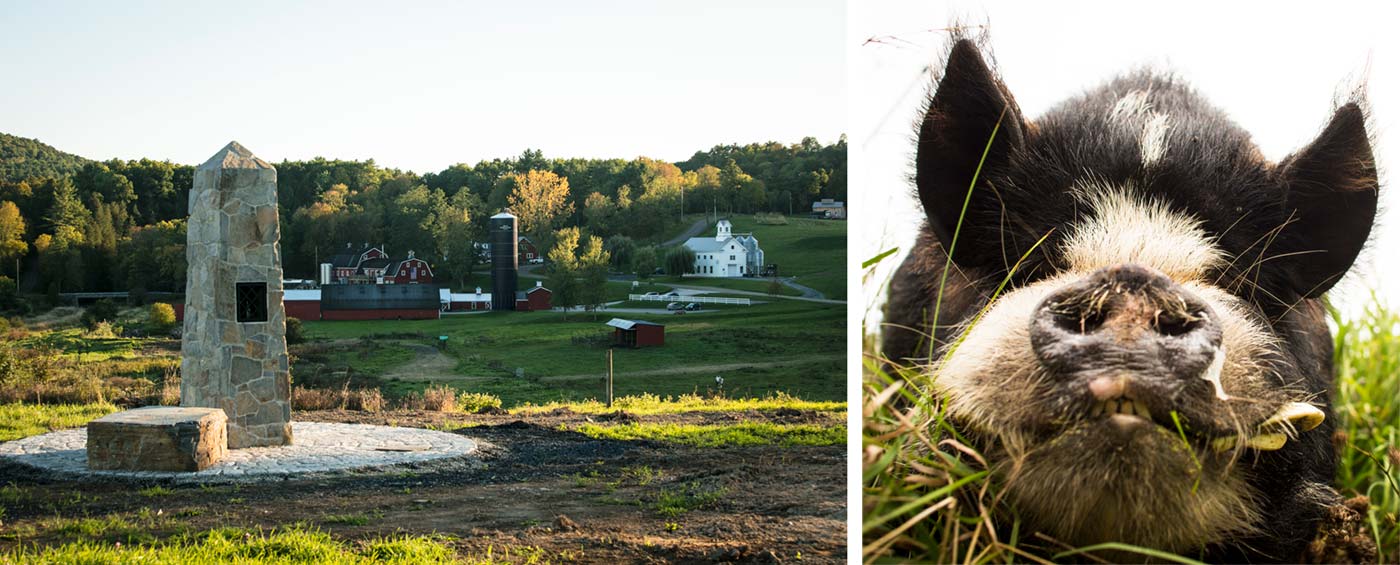
(left) A granite obelisk honors the distillery's founding pigs, Mortimer and Mauve. (right) A descendant of Mortimer and Mauve WhistlePig happily munches on the farm's lush pasture.
TAIL OF THE WHISTLEPIG
WhistlePig’s founder Raj Peter Bhakta was hiking in Colorado in 2003 when another trekker warned him to keep his eye out for the whistlepig ahead. Although he never encountered the curiously named critter (in reality a groundhog), Raj was so captivated by the whimsical name that he decided to bestow it on his new whiskey venture.
Next step? Design a logo that captured the distillery’s fun-loving spirit, for their spirits! The farm’s pair of delightful and highly social KuneKune pigs, Mortimer and Mauve, had evolved into beloved mascots. What better way to tap into their playfulness than to create a logo in their honor? A plump, grinning pig wearing a bow tie and Churchillian top hat—why not?
This lighthearted theme carries through to the 750-gallon gleaming stills that are named, of course, Mortimer and Mauve. Look closely and you’ll even see a copper curlicue tail emerging from Mauve’s still. The phalanx of stainless steel fermenting tanks nearby also bears cheeky names such as Pigsty, Whiskey Business, and Yeast Coast.
The contented duo passed away in 2014 and 2018 respectively. Their ashes are safely enshrined (along with an empty bottle of Spirit of Mauve Boss Hog 5th edition) in a granite obelisk atop a knoll, surrounded by rolling fields of rye overlooking the distillery’s beautifully renovated red-and-white farm buildings.
The spirit of Dave Pickerell lives on in touches like these, a reminder to the WhistlePig team to not take themselves too seriously and to have fun while creating some of the best whiskeys the world has to offer.


